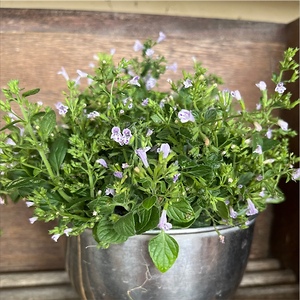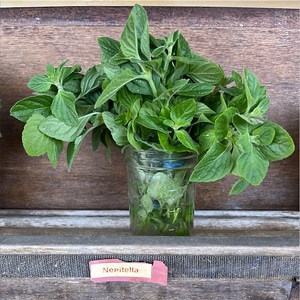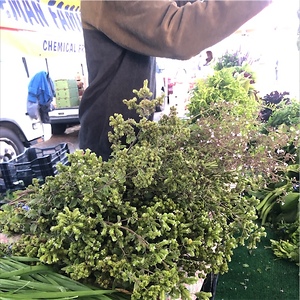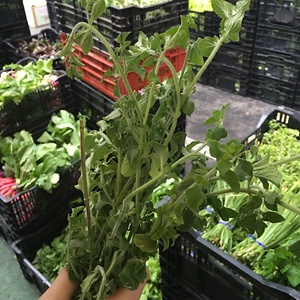


Nepitella
Estimated Inventory, bunch : 0
Description/Taste
Nepitella is an herbaceous perennial that spreads horizontally my means of underground rhizomes. It is a bushy herb that produces small, fuzzy leaves that are a shade of grayish-green. The plant blooms in the spring producing tiny pale purple flowers which are very aromatic and also edible. Nepitella’s strong and distinctive woodsy flavor is described as being a combination of mint, oregano and basil.
Seasons/Availability
Nepitella is available during the summer and autumn months, with its peak availability at the end of summer.
Current Facts
Nepitella is also known as Calamint or Lesser Calamint and Mentuccia in Rome. It is a member of the mint family, and botanically classified as Calamintha nepeta. The genus name comes from the Greek word kalos meaning beautiful and mimthe meaning mint. Nepitella is a relatively unknown Italian herb that is quickly making its way into dishes in restaurants throughout the US.
Nutritional Value
Like many other herbs in the mint family, a tea made of Nepitella may be used to treat stomach ailments.
Applications
This minty herb is traditionally paired with mushroom or artichoke dishes in its native Tuscany. It is used more often in savory dishes and its strong flavor compliments rich fatty meats such as pork, lamb, beef and spicy Italian sausage. Chop Nepitella and add to pastas or sautéed greens in recipes where oregano is traditionally used. Use as a fresh garnish in place of basil on pizzas or add to a side of grilled summer squash to add a spicy lemon accent. Like oregano, it can easily overpower a dish, and should be used sparingly. Nepitella can be dried and stored in an airtight container in a cool dry place.
Ethnic/Cultural Info
During Medieval Times, Nepitella was used as a digestive aid and a treatment for insomnia.
Geography/History
Nepitella is native to the Tuscany region of Italy, where it often grows wild or can be found growing along cobblestone paths and hedgerows. It has since been naturalized across Southern Europe and north to Great Britain. It grows well in gardens and is becoming a more common herb grown by small farmers to sell at local farmer’s markets in the US. Nepitella requires very little moisture and thrives in well drained soils where sunshine is plentiful.
Recipe Ideas
Recipes that include Nepitella. One
| Emiko Davies |
|
Braised Artichokes with Calamint |
| Emiko Davies |
|
Ovoli e Nepitella Pappardelle |
| Adri Barr Crocetti |
|
Mushrooms & Zucchini with Nepitella and Italian Parsley |











